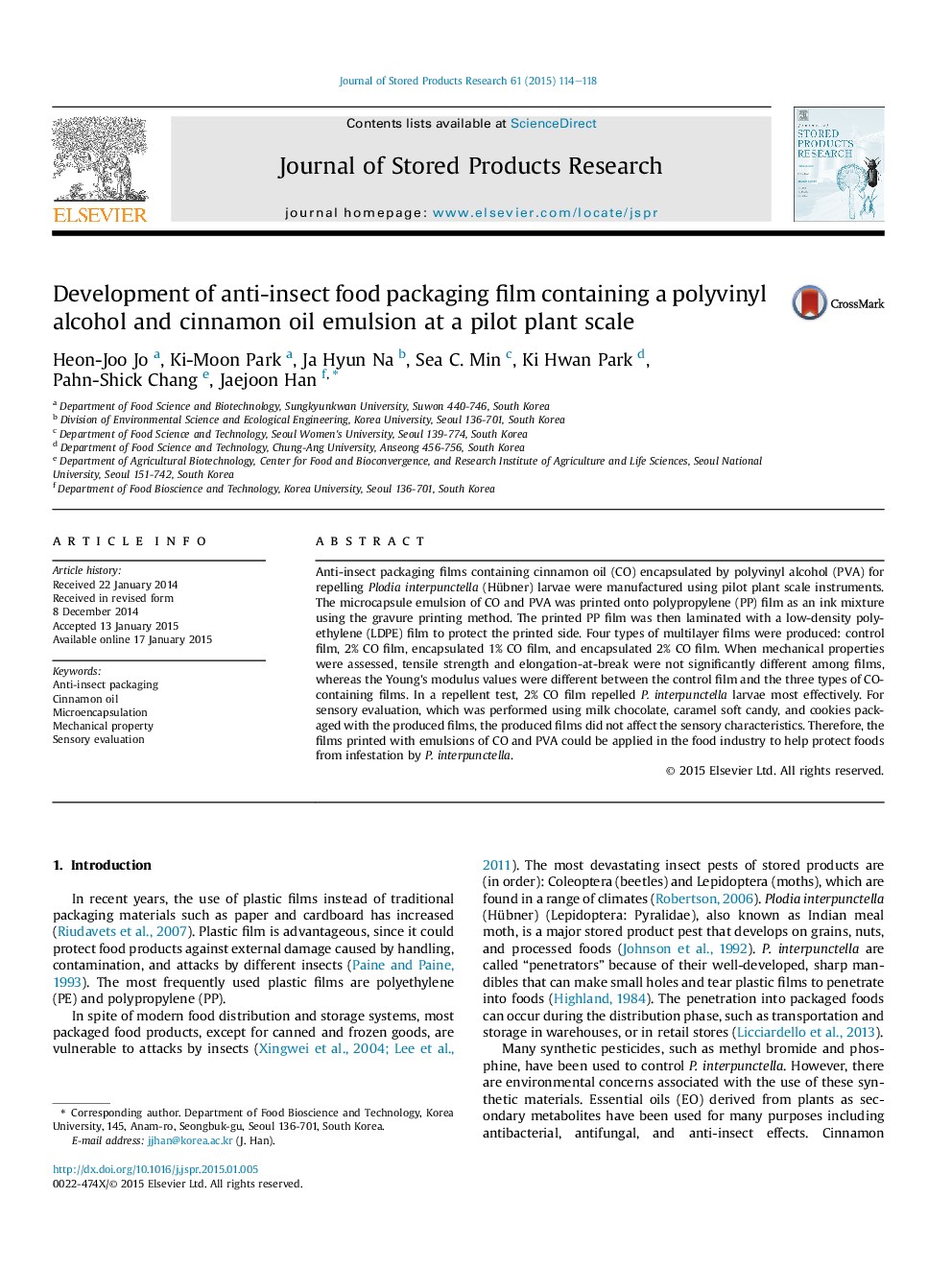| Article ID | Journal | Published Year | Pages | File Type |
|---|---|---|---|---|
| 4517009 | Journal of Stored Products Research | 2015 | 5 Pages |
•Anti-insect food packaging film was developed by pilot plant scale instruments.•Plastic film containing encapsulated cinnamon oil repelled Plodia interpunctella larvae.•Mechanical property of the film was not affected by cinnamon oil incorporation.•Anti-insect film did not affect the sensory characteristics of confectionary products.•The developed film will contribute to packaging industry as an insect-repelling material.
Anti-insect packaging films containing cinnamon oil (CO) encapsulated by polyvinyl alcohol (PVA) for repelling Plodia interpunctella (Hübner) larvae were manufactured using pilot plant scale instruments. The microcapsule emulsion of CO and PVA was printed onto polypropylene (PP) film as an ink mixture using the gravure printing method. The printed PP film was then laminated with a low-density polyethylene (LDPE) film to protect the printed side. Four types of multilayer films were produced: control film, 2% CO film, encapsulated 1% CO film, and encapsulated 2% CO film. When mechanical properties were assessed, tensile strength and elongation-at-break were not significantly different among films, whereas the Young's modulus values were different between the control film and the three types of CO-containing films. In a repellent test, 2% CO film repelled P. interpunctella larvae most effectively. For sensory evaluation, which was performed using milk chocolate, caramel soft candy, and cookies packaged with the produced films, the produced films did not affect the sensory characteristics. Therefore, the films printed with emulsions of CO and PVA could be applied in the food industry to help protect foods from infestation by P. interpunctella.
